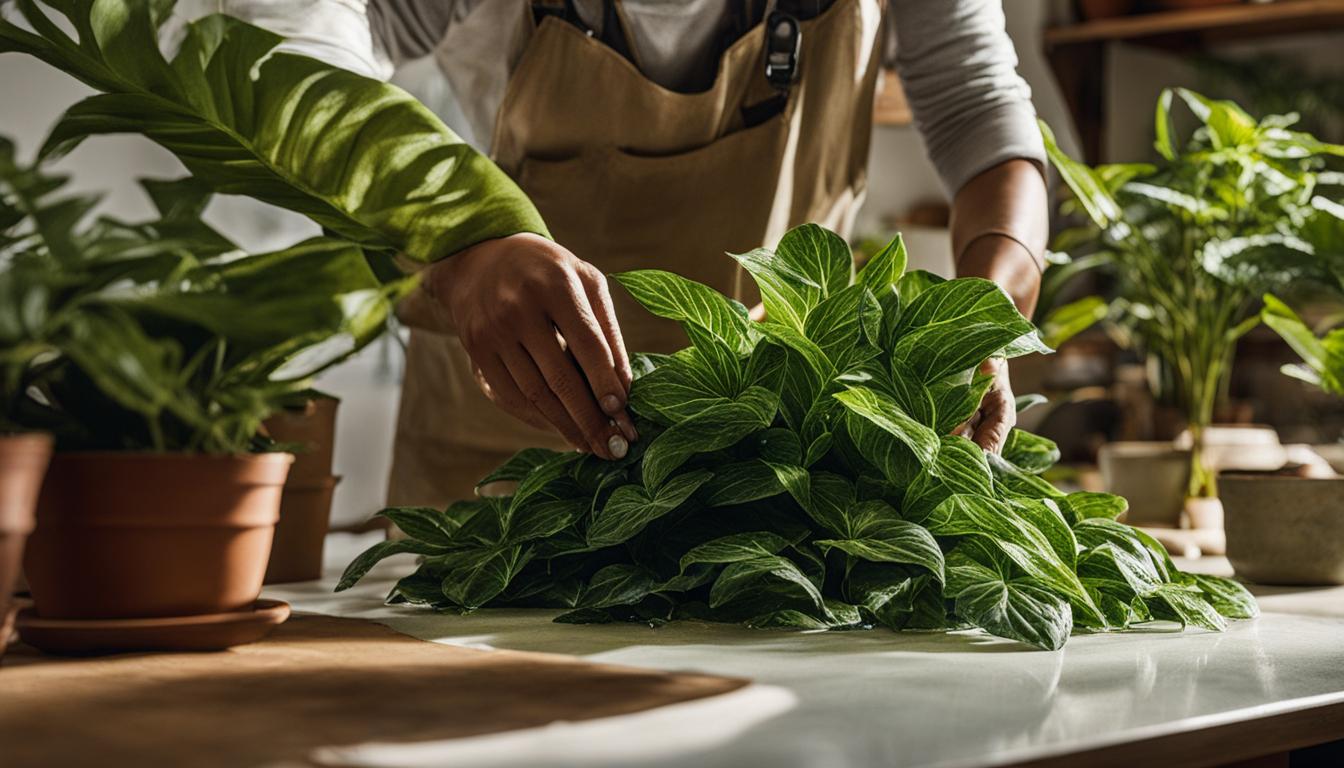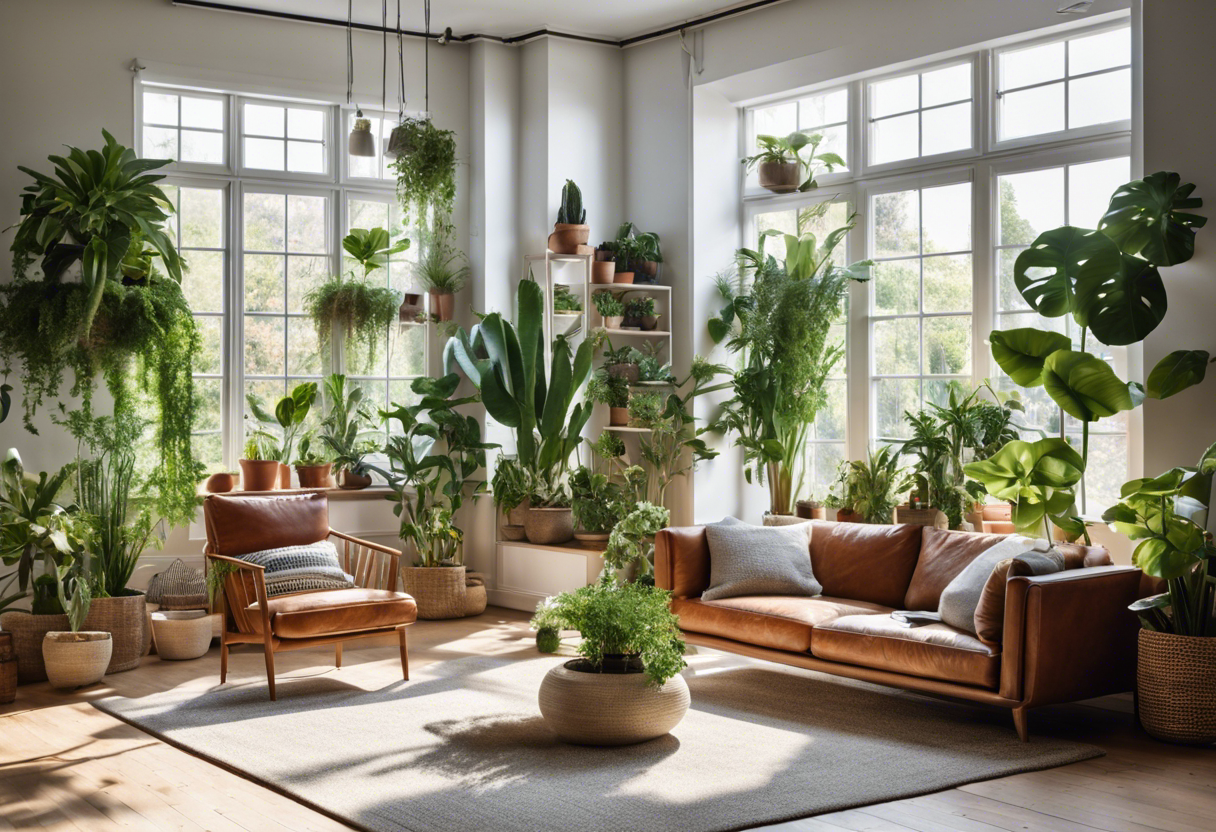Ever had a plant that you loved to bits, but despite your best efforts, it just wouldn’t thrive? Trust me, we’ve all been there. That’s why I’ve put together this guide on Plant Care – to help you avoid the heartbreak of losing another leafy friend.
In this guide, we’ll cover everything from choosing the right plants for your space to troubleshooting common plant problems. So buckle up and get ready to transform your brown thumb into a green one! Keep reading about Green Thumb Mastery: Your Ultimate Guide to Plant Care.
Key Takeaways
- The blog post provides comprehensive guidance on plant care, focusing on watering, sunlight exposure, soil type, and potting.
- It emphasizes the importance of understanding each plant’s specific needs for optimal growth.
- The post offers tips on identifying and addressing common plant diseases and pests.
- It also suggests using organic fertilizers for better plant health and sustainability.
- Lastly, it encourages regular pruning to maintain the shape and size of plants.
What is Plant Care?
Plant care, my friends, isn’t just about keeping your green buddies alive. It’s a whole world of plant maintenance and gardening basics that goes beyond watering and sunlight. We’re talking about the nitty-gritty of plant nurturing to ensure optimal plant health, whether it’s for your outdoor garden or indoor plant care.
Understanding the Basics of Plant Care
Now, let’s break down these basics, shall we? First off, there’s watering. Not too much, not too little – just right. That’s the golden rule for watering plants.
Next up is sunlight. Your leafy pals need their daily dose of Vitamin D too! But remember, some like it hot while others prefer a bit of shade. So understanding the right amount of sunlight for plants is key.
And then there’s soil type. You can’t just throw your plant in any old dirt and expect it to thrive! Different plants require different soil types for plants, so make sure you’ve got the right one!
Importance of Proper Plant Care
So why all this fuss about proper plant care? Well, it’s simple really – healthy plants are happy plants! And happy plants make us happy people! The benefits go beyond aesthetics though.
Properly cared-for plants are less likely to fall prey to diseases or pests which means they live longer and healthier lives (healthy plants). Plus, they do a great job at purifying our air and creating a calming environment around us.
But wait, there’s more! Did you know that by taking good care of your green buddies you’re also positively impacting our environment? Yep, that’s right! Plants absorb CO2 and release oxygen during photosynthesis which helps combat climate change (environmental impact of plant care). So kudos to you for being an eco-warrior!
How to Choose the Right Plants for Your Space?
Choosing the right plants for your space is like picking out a new pet. It’s all about compatibility! You’ve got to consider your space conditions and lifestyle. Let’s dive into these aspects.
Assessing Your Space: Light, Temperature and Humidity
First off, let’s talk about light. Each plant has its own light requirements. Some love basking in full sunlight, while others prefer shady corners. So, take note of how much natural light your space gets during the day.
Next up is temperature. Most indoor plants are tropical beauties that enjoy warmth. But hey, some can handle a bit of chill too! Understand the temperature effects on plants before making a choice.
Lastly, we have humidity. This one’s tricky because it varies throughout the year and depends on where you live. Some plants thrive in high humidity while others need dry air. So it’s essential to assess this aspect when choosing plants for your home.
Choosing Plants Based on Your Lifestyle
Now let’s get personal – your lifestyle plays a huge role in plant care selection! If you’re someone with a packed schedule, go for low-maintenance plants that don’t mind being neglected now and then.
On the other hand, if you’re often jet-setting around the globe (lucky you!), opt for hardy species that can withstand longer periods without water or care. Remember, choosing the right plant isn’t just about aesthetics; it’s also about finding a leafy friend that fits seamlessly into your life!
What are the Essential Elements of Plant Care?
The basics of plant care boil down to a few key elements. We’re talking watering, understanding light needs, picking the right soil and fertilizer, and mastering pruning and repotting. Let’s dive into these plant care essentials.
Watering: Techniques and Schedules
Watering is more than just dumping water on your plants. Different plants have different hydration needs. Some like it wetter than a duck in a pond, others prefer things drier than a desert cactus. So, understanding various watering techniques for plants is crucial.
Now, let’s talk schedules. Just like you wouldn’t want to eat dinner at 3 am, plants also have their preferred watering times. A good plant watering schedule can make all the difference between a thriving plant and one that’s just surviving.
Light Requirements: Understanding Different Types of Light
Next up on our plant care journey is light requirements. Plants are like Goldilocks – they need their light just right! Too much or too little can spell disaster. So getting to grips with the light requirements for plants is essential.
Different types of light affect plant growth differently. Some plants love basking in full sunlight while others thrive in shady spots. Understanding these differences helps you provide the optimal conditions for your green buddies.
Soil and Fertilizer: Choosing the Right Mix
Soil isn’t just dirt; it’s a smorgasbord of nutrients for your plant! The right mix of soil and fertilizer can make or break your plant’s health. It’s all about finding what works best for each specific type of plant.
Choosing the correct soil can be as complex as selecting wine – there are so many varieties! Similarly, picking out the perfect fertilizer is another important aspect of plant care. Remember folks, happy soil equals happy roots!
Pruning and Repotting: When and How to Do It?
Pruning and repotting are like a spa day for your plants. It’s all about timing and technique. Knowing when to prune or repot can be the difference between a flourishing plant and a wilting one.
Pruning helps your plant focus its energy on new growth, while repotting gives it more space to spread its roots. But remember, every plant is different – what works for one might not work for another. So always do your homework before you start snipping or moving things around!
How to Troubleshoot Common Plant Problems?
When it comes to plant care, knowing how to troubleshoot common plant problems is a must. It’s all about recognizing the signs, fighting off pests and diseases, and playing doctor with dying plants.
Identifying Signs of Distress in Plants
Ever seen your plant looking a bit off-color? Or maybe it’s wilting like an actor in a drama series? These are classic signs of distress in plants. Discoloration often means your green buddy isn’t getting the right nutrients or light.
Wilting, on the other hand, can be due to overwatering or underwatering. Drooping leaves? That could be temperature stress. So keep an eye out for these unhealthy plant symptoms.
Dealing with Pests and Diseases
Now let’s talk about those pesky pests and diseases that love to crash the party. The key here is early detection and intervention. If you spot tiny bugs or unusual spots on your plant, it’s time for some plant pest control.
Organic methods are always best – think neem oil or insecticidal soap for bugs, and baking soda spray for fungal diseases. Remember, prevention is better than cure when dealing with common plant diseases.
Reviving a Dying Plant
Finally, what do you do if your beloved green friend seems on the brink of death? Don’t panic! With proper care, you can revive even the most wilted of plants.
Firstly, identify the problem – Is it too much sun? Not enough water? Once you’ve figured that out, adjust accordingly. Sometimes all a dying plant needs is a little TLC (Tender Loving Care) and patience. Keep at it and soon enough you’ll be back to being a proud plant parent!
Advanced Tips for Green Thumb Mastery
Ready to level up your plant care game? Let’s dive into some advanced green thumb techniques.
Propagating Plants: An Introduction
Ever heard of plant propagation? It’s like magic! You take a piece of a plant, and voila, you’ve got a whole new one. This introduction to plant propagation is going to change your indoor gardening life.
Now, why should you bother with this hocus pocus? Well, it’s not just about multiplying your green babies. Propagation can help you understand your plants better. It’s an essential part of advanced plant care, and mastering it can really boost your green thumb skills.
Creating a Balanced Indoor Garden
Next on our agenda is creating a balanced indoor garden. No, we’re not talking about Feng Shui here (although that could be fun too!). We’re talking about promoting healthy growth and aesthetic appeal in your little indoor jungle.
You see, balance in an indoor garden isn’t just about how things look. It’s also about ensuring each plant gets what it needs – the right amount of light, water, and space to grow. These are key factors in promoting healthy plant growth indoors.
And let’s not forget aesthetics! A well-balanced garden can be a real eye-candy. So go ahead and experiment with different heights, colors, and textures. Remember those aesthetic indoor gardening tips we discussed earlier? Time to put them into practice!
Seasonal Care for Plants
Last but not least – seasonal care for plants! Just like us humans, plants have their own rhythms influenced by the seasons. Understanding these rhythms is crucial for adjusting your plant care routines seasonally.
For example, during winter months when sunlight is scarce, you might need to move your plants closer to the window or cut back on watering. On the other hand, in the hot summer months, your plants might need extra hydration and shade.
Remember, seasonal plant care isn’t about drastic changes. It’s about subtle adjustments that can make a world of difference to your green friends. So keep an eye on those leaves and adjust as necessary!
To Wrap Up
In the great garden of life, we’ve just given you the secret fertilizer to turn your thumb greener than a jealous parrot. The world of Plant Care is as thrilling as it is nurturing.
So, don’t be a couch potato — get up and show your plants some love! Remember, a plant whisperer like you can make even the wildest fern purr like a kitten with the right care.





